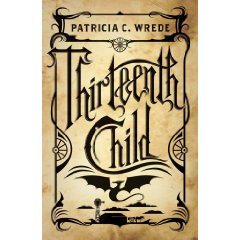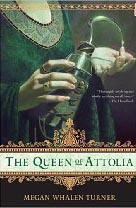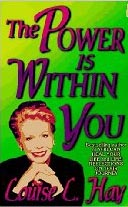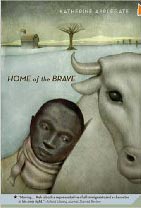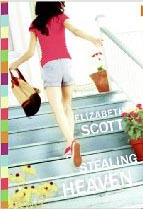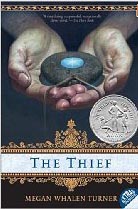Review of Walking with God, by John Eldredge
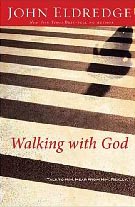
Walking with God
by John Eldredge
Thomas Nelson, 2008. 218 pages.
Starred review.
http://www.walkingwithgod.net/
The caption on the front of this book reads, “Talk to Him. Hear from Him. Really.”
When I was a young college student at Biola University, a popular book was Decision Making and the Will of God. What I got out of this book was the idea that God didn’t care about the minute details of our lives. You shouldn’t ask God what color shirt you should wear today or whether you should go to lunch early or late. The book taught that God gives us moral guidelines in the Bible, and within those guidelines we can do what we want. That God would be happy with either wonderful choice of a marriage partner, for example.
John Eldredge takes a different view. He believes that we can share our daily lives with God, ask His counsel for large and small decisions, and accept His guidance. Honestly, in the past few years as I’ve gone through the fire of being abandoned by my husband, God has been near to me like never before, and I’m finding He is indeed willing to come alongside and help and guide, as John Eldredge describes. It was inspiring to read this account of someone who is trying to live his life, walking with God.
And the book takes more the form of a journal than of a manual. John Eldredge takes the approach of describing his own walk with God so that we can see how it might look.
In the Introduction, he says:
“It is our deepest need, as human beings, to learn to live intimately with God. It is what we were made for. . . .
“Really now, if you knew you had the opportunity to develop a conversational intimacy with the wisest, kindest, most generous and seasoned person in the world, wouldn’t it make sense to spend your time with that person, as opposed to, say, slogging your way through on your own?
“Whatever our situation in life — butcher, baker, candlestick maker — our deepest and most pressing need is to learn to walk with God. To hear his voice. To follow him intimately. It is the most essential turn of events that could ever take place in the life of any human being, for it brings us back to the source of life. Everything else we long for can then flow forth from this union.”
As the book begins, he describes why he believes intimacy with God is possible even today:
“Now, I know, I know — the prevailing belief is that God speaks to his people only through the Bible. And let me make this clear: he does speak to us first and foremost through the Bible. That is the basis for our relationship. The Bible is the eternal and unchanging Word of God to us. It is such a gift, to have right there in black and white God’s thoughts toward us. We know right off the bat that any other supposed revelation from God that contradicts the Bible is not to be trusted. So I am not minimizing in any way the authority of the Scripture or the fact that God speaks to us through the Bible.
“However, many Christians believe that God only speaks to us through the Bible.
“The irony of that belief is that’s not what the Bible says.
“The Bible is filled with stories of God talking to his people. Abraham, who is called the friend of God, said, ‘The Lord, the God of heaven, who brought me out of my father’s household and my native land and who spoke to me . . .’ (Genesis 24:7). God spoke to Moses ‘as a man speaks with his friend’ (Exodus 33:11). He spoke to Aaron too: ‘Now the Lord spoke to Moses and Aaron about the Israelites’ (Exodus 6:13). And David: ‘In the course of time, David inquired of the Lord. “Shall I go up to one of the towns of Judah?” he asked. The Lord said, “Go up.” David asked, “Where shall I go?” “To Hebron,” the Lord answered’ (2 Samuel 2:1). The Lord spoke to Noah. The Lord spoke to Gideon. The Lord spoke to Samuel. The list goes on and on.
“I can hear the objections even now: ‘But that was different. Those were special people called to special tasks.’ And we are not special people called to special tasks? I refuse to believe that. And I doubt that you want to believe it either, in your heart of hearts.
“But for the sake of argument, notice that God also speaks to ‘less important’ characters in the Bible. God spoke to Hagar, the servant girl of Sarah, as she was running away. . . . In the New Testament, God speaks to a man named Ananias who plays a small role in seven verses in Acts 9. . . .
“Now, if God doesn’t also speak to us, why would he have given us all these stories of him speaking to others? ‘Look — here are hundreds of inspiring and hopeful stories about how God spoke to his people in this and that situation. Isn’t it amazing? But you can’t have that. He doesn’t speak like that anymore.’ That makes no sense at all. Why would God give you a book of exceptions? This is how I used to relate to my people, but I don’t do that anymore. What good would a book of exceptions do you? That’s like giving you the owner’s manual for a Dodge even though you drive a Mitsubishi. No, the Bible is a book of examples of what it looks like to walk with God.”
Here is another book of examples, exploring the question of what it looks like to walk with God in today’s world. There’s food for thought, and there’s inspiration and encouragement.
God, what is the life you want me to live?
